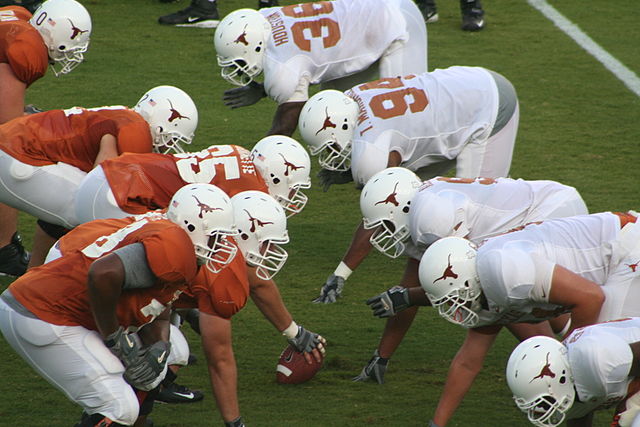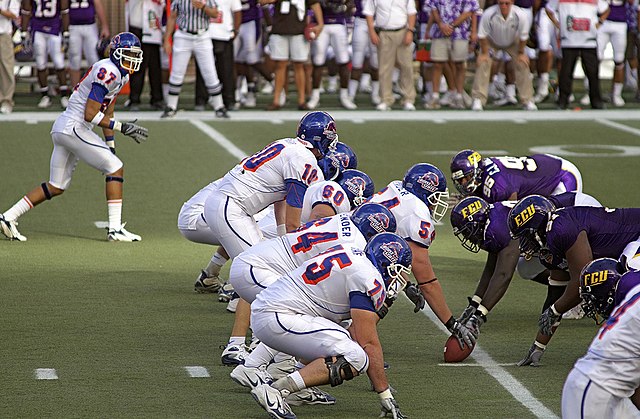The shotgun formation is a formation used by the offensive team in gridiron football mainly for passing plays, although some teams use it as their base formation. Instead of the quarterback receiving the snap from center at the line of scrimmage, in the shotgun he stands farther back, often five to seven yards off the line. Sometimes the quarterback will have a back on one or both sides before the snap, while other times he will be the lone player in the backfield with everyone spread out as receivers.
The Green Bay Packers (left) in the shotgun in a game against the New York Giants in 2007
The modern shotgun offense was developed by head coach Red Hickey of the San Francisco 49ers in 1960.
Tom Brady in the shotgun at Super Bowl XXXIX.
Side view of the shotgun formation
American football positions
In American football, the specific role that a player takes on the field is referred to as their "position". Under the modern rules of American football, both teams are allowed 11 players on the field at one time and have "unlimited free substitutions", meaning that they may change any number of players during any "dead ball" situation. This has resulted in the development of three task-specific "platoons" of players within any single team: the offense, the defense, and "special teams". Within these three separate "platoons", various positions exist depending on the jobs that the players are doing.
The offensive line (on left, in orange jerseys) consists of a center (with ball in hand ready to snap) with two guards on either side, and two tackles.
A wide receiver (No. 87, in white) begins a play in the flanker position
The four defensive linemen (in red) have their hands on the ground in a "three point stance"
This defense (in white) is in a base 4–3 set. Just behind the four defensive linemen (whose hands are on the ground) are three linebackers (Nos. 55, 3 and 16), and further back are two safeties (numbers 24 and 44). The two cornerbacks are off screen to the left and right.








